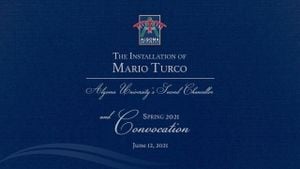On February 24, 2025, the Kamus Besar Bahasa Indonesia (KBBI) announced the inclusion of 1,145 new entries sourced from 20 local languages across Nusa Tenggara Timur (NTT). This significant addition not only enhances the richness of the Indonesian language but also ensures the representation of minority languages within the framework of the country’s official lexicon.
Haniva Yunita Leo, Widyabasa Ahli Muda from the Balai Bahasa NTT, expressed the importance of this development, stating, "Entri harus bersifat unik atau belum ada padanan dalam KBBI," which translates to "Entries must be unique or not have equivalents already present in KBBI.” This emphasizes the criteria set for the inclusion of words from local languages, which must be distinct, easy to pronounce, adhere to Indonesian language rules, and be free from negative connotations.
This initiative to incorporate local language entries began around 2017, driven by government policies aiming to inventory these languages. According to Leo, the process entails comprehensive research, workshops involving native speakers, and evaluations by linguistic committees to determine if the new entries meet the set standards.
Among the notable entries added from NTT are examples like "dureng," which denotes persistent rain, and "lingko," meaning communal land used collectively for cultivation, shaped like a spider web. These terms reflect the local culture and realities, demonstrating the dictionary's role as both a linguistic resource and a cultural repository.
Despite the positive strides made, the preservation of NTT's local languages faces substantial challenges. Leo highlighted concerns about language extinction, noting, "There are 72 recorded local languages in NTT, some of which are on the brink of extinction," referencing languages like Beilel and Ilu. The need for specific regulations to protect and promote local languages is apparent, and initiatives are underway to embed these languages within educational curricula.
Ambrosius Kodo, the Head of the Education and Culture Office of NTT, supports the idea of integrating local languages as coursework, reinforcing, "Bahasa daerah bisa dijadikan sebagai salah satu materi pelajaran muatan lokal di sekolah," meaning "Local languages can be one of the local content study subjects at school.” This highlights the importance of such languages not just as cultural artifacts but as living languages to be taught and used.
With the continuous expansion of the KBBI to include local language entries, Indonesia showcases its commitment to linguistic diversity and cultural identity. The integration of both mainstream and minority languages within the national lexicon fortifies the nation's unified linguistic framework, echoing the significance of every language spoken across the archipelago, reinforcing their centrality to Indonesia's rich and diverse cultural narrative.
Looking forward, stakeholders believe it is imperative for both government and educational institutions to prioritize and invest in programs advocating for language preservation. This involves fostering environments where local languages can thrive, being actively used and taught alongside the national language, thereby ensuring their survival for future generations.



